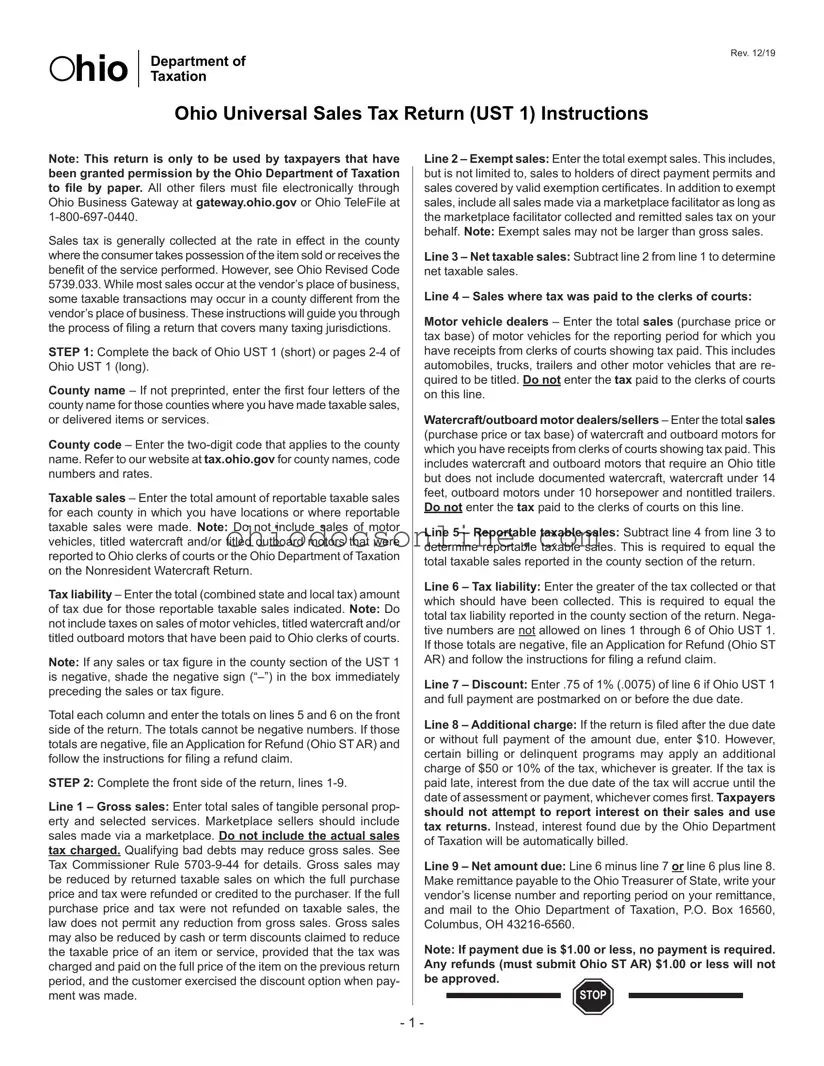Ust 1 Ohio Template in PDF
The Ust 1 Ohio form is a sales tax return used by taxpayers in Ohio who have received permission from the Ohio Department of Taxation to file their returns on paper. This form helps businesses report their taxable sales and calculate the sales tax due for various counties in Ohio. Understanding how to accurately complete this form is essential for compliance and to avoid any potential penalties.
Open Editor
